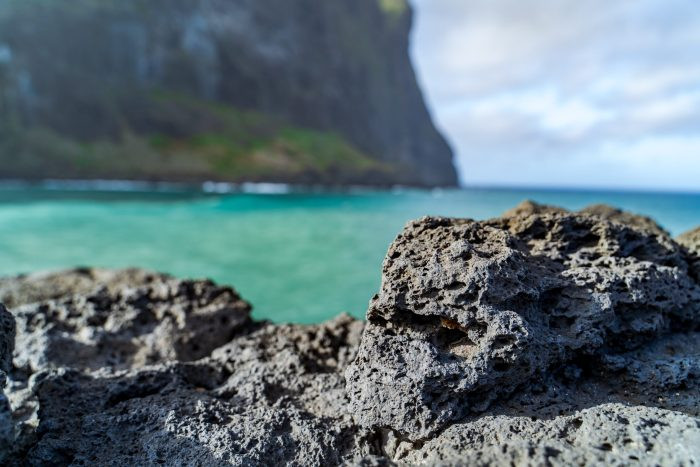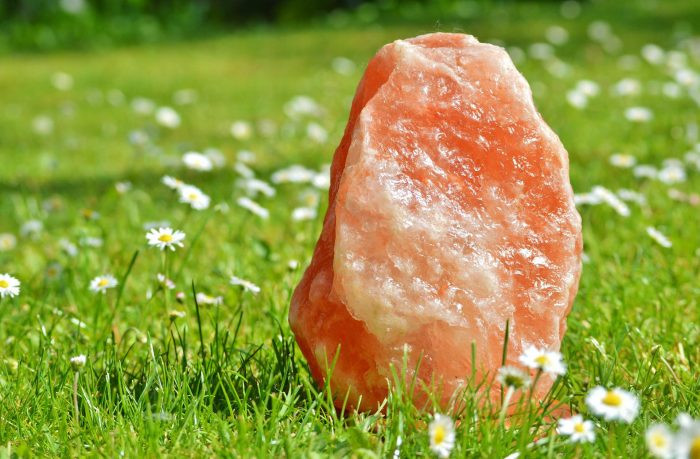Have you ever picked up a rock and wondered about its story? Rocks are more than just solid objects beneath our feet; they are dynamic pieces of Earth’s history, each with a unique origin and fascinating characteristics. While they might all seem the same at first glance, geologists classify rocks into three major types: igneous, sedimentary, and metamorphic. Understanding these classifications opens up a whole new world of discovery, revealing the incredible processes that shape our planet.
 3 Types of Rocks Explained with Differences and Examples
3 Types of Rocks Explained with Differences and Examples
Delving into the 3 Kinds Of Rocks is fundamental to grasping earth science and geology. Let’s embark on a journey to explore each type, uncovering their formation, key characteristics, and examples you can find all around you.
Igneous Rocks: Born from Fire
Imagine the fiery heart of a volcano erupting, spewing molten rock onto the Earth’s surface. This molten rock, known as magma when underground and lava when it erupts, is the birthplace of igneous rocks. The term “igneous” itself comes from the Latin word “ignis,” meaning fire, perfectly capturing their fiery origin. Igneous rocks are formed as magma or lava cools and solidifies, a process called crystallization.
Within the igneous family, we find two main categories based on where the cooling process occurs: intrusive and extrusive rocks.
 Dark grey volcanic extrusive igneous rock
Dark grey volcanic extrusive igneous rock
Intrusive Igneous Rocks: The Slow Coolers
Intrusive igneous rocks, also known as plutonic rocks, are formed deep beneath the Earth’s surface. Here, insulated by layers of surrounding rock, magma cools very slowly over thousands or even millions of years. This slow cooling period allows for the development of large, visible crystals within the rock structure. Granite is a classic example of an intrusive igneous rock, recognizable by its speckled appearance of interlocking crystals of quartz, feldspar, and mica. You might even have granite countertops in your kitchen, bringing a piece of Earth’s deep-seated geology into your home!
Extrusive Igneous Rocks: Rapidly Cooled at the Surface
In contrast, extrusive igneous rocks, or volcanic rocks, are formed when lava erupts onto the Earth’s surface. Exposed to the much cooler atmosphere or ocean, lava cools and solidifies rapidly. This rapid cooling process doesn’t leave much time for large crystals to form. Basalt is a common extrusive rock, characterized by its fine-grained texture and often dark color. Volcanic rock is another term used for extrusive rocks, highlighting their origin from volcanic activity. Obsidian, pumice, and tuff are also examples of extrusive rocks, each with unique textures and appearances due to variations in cooling rates and gas content during solidification.
The mineral composition and cooling rate significantly influence the final characteristics of igneous rocks, leading to a diverse range of rock types beyond granite and basalt. Other examples of igneous rocks include diorite, gabbro, peridotite, and pegmatite, each formed under specific conditions and with distinct properties.
Sedimentary Rocks: Layers of Time
Sedimentary rocks tell a different story, one of erosion, deposition, and time. Unlike the fiery birth of igneous rocks, sedimentary rocks are formed at or near the Earth’s surface through the accumulation and cementation of sediments. These sediments can be fragments of pre-existing rocks, minerals, or even organic material. Natural processes like weathering, erosion by wind and water, and precipitation play crucial roles in the formation of this second type of rock.
 Natural rock salt sedimentary rock in grassy environment
Natural rock salt sedimentary rock in grassy environment
To understand sedimentary rock formation, think about sediment itself. Imagine a river carrying sand, silt, and clay downstream. As the river slows down or enters a lake or ocean, these particles settle out of the water and accumulate on the bottom. Over time, the weight of overlying sediments compresses the lower layers, and dissolved minerals in the water act as a natural cement, binding the particles together to form solid rock. This process, called lithification, transforms loose sediment into sedimentary rock.
Sedimentary rocks are further classified based on their origin into two main groups: detrital and chemical rocks.
Detrital Sedimentary Rocks: From Fragments to Rock
Detrital sedimentary rocks, also known as clastic sedimentary rocks, are formed from the fragments (detritus) of other rocks and minerals. These fragments can range in size from microscopic clay particles to large boulders. They are transported by wind, water, or ice and eventually deposited in layers. Sandstone, shale, and conglomerate are common examples of detrital rocks, each distinguished by the size of the sediment particles they are composed of. Sandstone, as the name suggests, is made of sand-sized grains, while shale is formed from fine-grained clay and silt. Conglomerate consists of larger, gravel-sized fragments cemented together.
Organic detrital rocks form from the accumulation and compression of organic material, such as plant and animal remains. Coal is a prime example of an organic sedimentary rock, formed from the remains of ancient plants that have been compressed and carbonized over millions of years.
Chemical Sedimentary Rocks: Precipitated from Solutions
Chemical sedimentary rocks form through chemical precipitation. This process occurs when minerals dissolved in water become supersaturated and precipitate out of solution. Evaporation is a common trigger for chemical precipitation. As water evaporates, the concentration of dissolved minerals increases, eventually leading to their precipitation and accumulation.
Limestone is the most abundant chemical sedimentary rock, often formed in marine environments from the accumulation of calcium carbonate shells and skeletons of marine organisms, or through direct precipitation of calcium carbonate from seawater. Evaporites, such as rock salt and gypsum, are another type of chemical sedimentary rock that forms from the evaporation of saline water, leaving behind mineral deposits.
Metamorphic Rocks: Transformation Under Pressure
Metamorphic rocks are the transformers of the rock world. The term “metamorphic” comes from Greek words meaning “change of form,” aptly describing how these rocks are created. Metamorphic rocks arise from existing rocks – igneous, sedimentary, or even other metamorphic rocks – that have been transformed by intense heat, pressure, or chemical reactions. This transformation, called metamorphism, occurs deep within the Earth’s crust.
 Banded texture of Kyanite metamorphic rock
Banded texture of Kyanite metamorphic rock
The extreme conditions of metamorphism cause significant changes in the original rock. Minerals within the rock can recrystallize, rearrange, or even change into new minerals. The texture and structure of the rock are also altered, often resulting in a more compact and crystalline form. Marble, slate, quartzite, schist, and gneiss are well-known examples of metamorphic rocks, each exhibiting unique textures and mineral compositions resulting from different metamorphic conditions and parent rocks. Marble, for instance, is metamorphosed limestone, while quartzite is metamorphosed sandstone. Slate is formed from shale, and gneiss typically originates from granite or sedimentary rocks.
The Interplay of Metamorphic and Igneous Rocks
While metamorphic rocks are transformed from existing rocks, extreme heat can push them into a new phase: melting. If the temperature becomes high enough during metamorphism, the rock can melt and become magma, the molten material that forms igneous rocks. Therefore, while metamorphism is a solid-state transformation, exceeding the melting point leads to the formation of igneous rocks.
Volcanic activity also plays a role in metamorphism through contact metamorphism. When hot magma intrudes into existing rocks, the heat from the magma can cause metamorphism in the surrounding rocks. This contact metamorphism occurs in the zone adjacent to the magma intrusion, creating metamorphic rocks without the rock fully melting and becoming igneous.
 Graphical representation of 3 types of rocks and their differences
Graphical representation of 3 types of rocks and their differences
Unveiling Earth’s Processes Through Rocks
Understanding the 3 types of rocks – igneous, sedimentary, and metamorphic – is like learning the basic alphabet of geology. Each rock type provides valuable clues about Earth’s dynamic processes, from volcanic eruptions and mountain building to erosion and the cycling of materials through time. By examining rocks, we can decipher Earth’s history, understand its ongoing transformations, and appreciate the incredible forces that have shaped the world around us.
Explore the fascinating world of rocks further at rockscapes.net. Discover stunning rock formations, learn about geological wonders, and delve deeper into the science of our planet. Every rock has a story to tell – are you ready to listen?